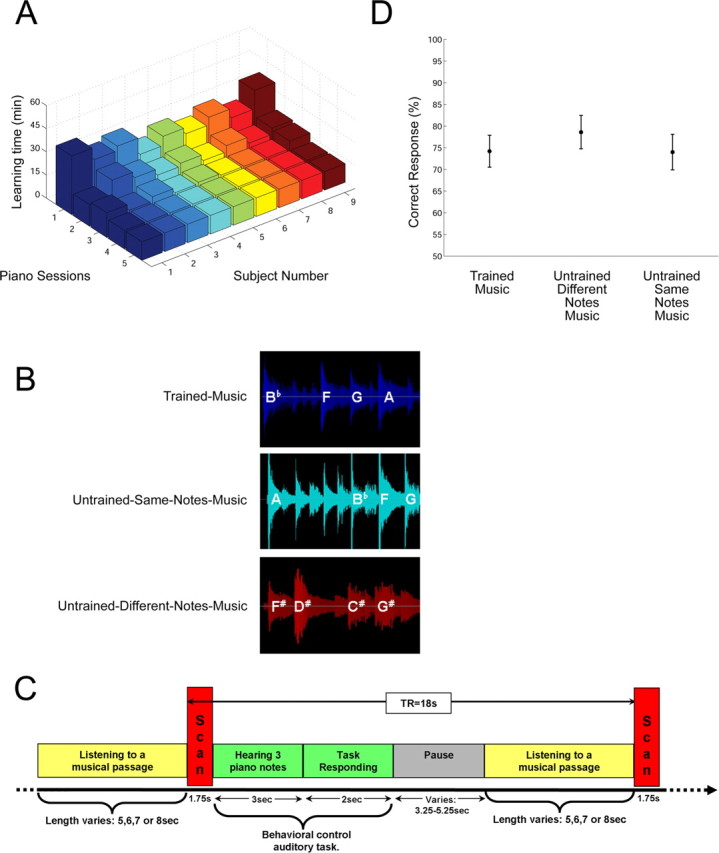Figure 2.

Experimental setup. A, Learning times of the trained-music are shown for individual subjects (n = 9) over five daily piano-training sessions. Learning time was influenced by the number of errors made during a session, until reaching error-free performance with the musical piece. A plateau level of performance is notable in sessions 4–5, obtaining the minimum possible learning time (12 min) set by the software. B, Examples of three fMRI experimental conditions. Sample short passages extracted from the trained-music that subjects learned how to play (blue) and two untrained control musical pieces are shown. These controls include an untrained-same-notes-music, in which the same notes were used in a different order to create a new melody (cyan) and an untrained-different-notes-music, composed of a completely different set of notes (red). C, A sample fMRI time series is shown between two imaging time points (TR, 18 s; TA, 1.75 s; red) within a single run. Images were acquired immediately after listening to short passages (5–8 s each; yellow) extracted from all three musical pieces. A behavioral control task (green) was used to control for listening attention; subjects heard three piano notes and had to press a button with their left hand if these notes had appeared as a subsequence in the preceding musical passage (yellow) they had heard. Intentionally, no images reflecting this task were acquired. We varied pause times between scans (gray) so that the TR remained fixed. D, Results of the behavioral control task are shown for all listening conditions. The graph shows the percentage of correct button presses from the group (n = 9) for each listening condition (24 trials per subject). No significant differences were found for mean correct responses across musical pieces (p = 0.489).
